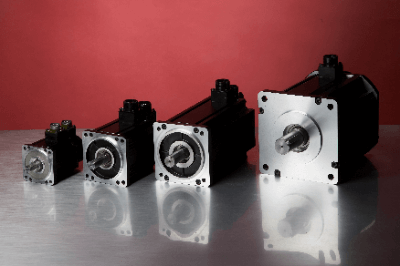What Is a Stepping Motor?

A stepping motor refers to a motor whose rotation angle can be controlled by pulse signals and is a type of motor that can guarantee high positioning accuracy.
Also known as a pulse motor, the rotation angle is determined by the number of pulse signals, which are control signals, and the number of phases of the motor, while the rotation speed depends on the pulse frequency, which corresponds to the speed of the pulses. It features high positioning accuracy and torque with open-loop control, coupled with its relatively inexpensive and simple motor configuration.
Uses of Stepping Motors
Stepping motors are used mainly in applications where positioning accuracy is required, as they are structurally suited for precise and reversible angle control. An example is a drive motor used to express two-dimensional movements of robot devices, such as automatic transfer equipment.
By combining a high-precision ball screw with a stepping motor, the feed rate of a stage can be expressed with extremely high precision and repeatability. Stepping motors can also be used to adjust the opening angle of valves precisely on coating machines that spray a certain amount of paint depending on how the valves are opened, allowing for more elaborate operations.
Principle of Stepping Motors
The inside of a stepping motor consists of a rotor connected to a shaft and several stators installed around the periphery of the rotor. The rotor section is further divided into two parts, each of which is magnetized so that its N and S poles are in opposite phase.
The stator is characterized by the presence of small teeth, which is precisely controlled. 2-phase stepping motors, for example, are magnetized with the same polarity for the stator facing each other and in the opposite direction for the stator next to it. Therefore, the stator attracts and repels the unevenness of the rotor, and the rotor is held in an energetically stable position relative to the stator’s magnetization state.
Then, when current is applied to reverse the polarity of the stator, the rotor rotates by one stator. In a 5-phase stepping motor, this is controlled sequentially in 5 steps, thus enabling finer angle control.
Other Information on Stepping Motors
1. Torque of Stepping Motors
The output torque of a stepping motor varies depending on the rotational speed. In general, the torque is high when the rotational speed is slow and low when the rotational speed is high. When selecting a stepping motor, check the motor’s rotational speed-torque characteristics chart and select a motor so that the required torque at the rotational speed to be used falls within the pull-out torque curve.
In particular, the pullout torque at high rotational speed is about 20% of the maximum excitation quiescent torque.
Torque characteristics also vary depending on the driver used, internal structure, and input voltage, even for motors of the same external dimensions. Therefore, motor selection should be made in consideration of the manufacturer, driver combination, and input voltage.
2. Drivers for Stepping Motors
A control device called a driver is required to operate a stepping motor. The driver controls the current voltage that is applied to the stepping motor to control the rotation speed, amount of rotation, and other factors.
Drivers are available in constant-current and low-voltage drive systems, but the constant-current system is often used because of its superior torque characteristics at high speeds. Generally, a pulse train is input to the driver from a host control device as an indication of rotation speed and amount, and the motor is rotated at the indicated speed and amount according to the input pulse train.
Some drivers are equipped with a function called micro-step. Stepping motors rotate with the basic step angle as the minimum rotation angle, but drivers with the micro-step function can adjust the current flowing to each coil to subdivide the basic step angle and increase the resolution of rotation electrically.
It also has the effect of reducing vibration and noise, overshoot at each step angle, and shock mitigation at startup and shutdown. The resolution of the micro-step function can be selected by DIP switches, etc., depending on the intended use.
3. Use With AC Servo Motors
AC servo motors are often quoted in connection with stepping motors.
Suitability of Stepping Motor
AC servo motors have a built-in encoder and feedback control, so the rotational torque is almost constant regardless of the rotation speed. Stepping motors, on the other hand, are not suitable for this application because their rotational torque decreases at high rotational speeds. Conversely, if low-speed rotation is the main use, stepping motor is suitable for this application.
Stepping motors are mainly available on the market in open-loop control type, but there are also products that can be close-controlled by attaching an encoder for improved efficiency. In such cases, however, it will be necessary to review the other advantage of these motors, which is their relatively small size, simple configuration, and low cost.
Applications for Which AC Servo Motors Are More Suitable
Applications that require AC servo motors are those that require advanced rotation control using multiple motors. Since open-loop control cannot be expected to compensate for motor-to-motor motion by sensing, AC servo motors are better suited for this application than stepping motors, as is the case with high-speed rotary motion.